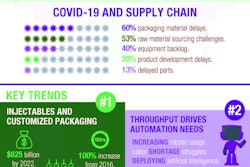
Most discussions about the communication function of packaging are about its role as a marketing tool, first conveying brand name, product category, and line-variety. Beyond that—using structure, graphics, and text—packaging bestows personality and aura. Particularly for retail products, such communication is essential for shelf impact and for a competitive advantage. Consumers seek products to satisfy wants and needs, and packaging is tasked with communicating that a given product delivers that satisfaction.
What should never be overlooked nor undervalued, however, is that consumer satisfaction has to be delivered safely. It’s the rare product that’s incapable of posing a hazard and/or inflicting harm. Products differ along that spectrum, and packaging should communicate commensurately. Brand owners might be tempted to soft pedal safety communications, concerned about triggering consumer reluctance. That concern runs counter to the reality that all products carry an implied warranty of safety. A consistent and overarching reality is that federal and state statues hold that companies only are to place into the commercial stream products that are reasonably safe.
A systematic approach to safety communications has three major components. The first is product composition, which begins at product conception and proceeds through product development. What a product is made of/from is a determinant of its safety.
There are myriad ways to formulate food & beverage, drugs & pharmaceuticals, and cosmetics, for example. The choices must balance factors such as sensatory appeal, efficacy, and cost. Chosen formulas are communicated by ingredients listing. For food & beverage, ingredients listing is supplemented with Nutritional Facts in a standardized format. Composition also relates to manufactured products. An example includes toys that have small parts that can pose a choking hazard.
The second major component of safety communications is directions of use (alternatively, use instructions). Whereas communicating finalized product composition is straightforward, directions are more complex.
The sought-after result is that the brand owner’s message is correctly interpreted by the consumer. Word choice should be kept simple and precise, to not exceed reading levels and to not invite ambiguity. Sentence length should not be unduly long, so as not to burden comprehension. There should be a logical sequence to the directions/instructions to facilitate a step-by-step compliance.
Brand managers are not necessarily adept at writing directions/instructions. As such, their drafts should be reviewed within the organization, and afterward, tested on representative test participants. Directions/instructions need not be communicated only with text. Depending on the product, illustrations can be warranted.

























